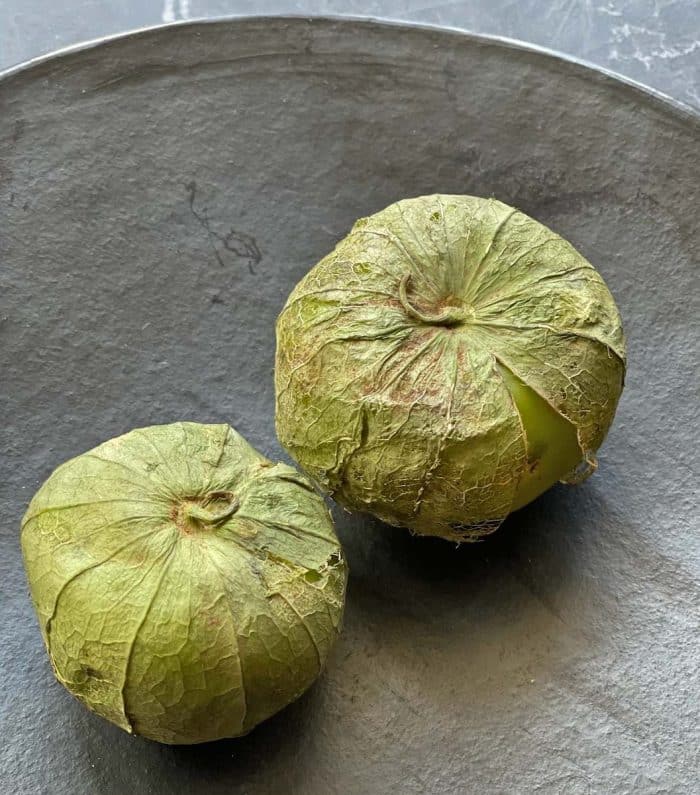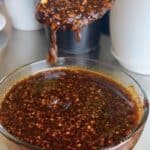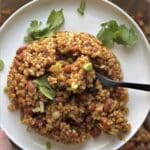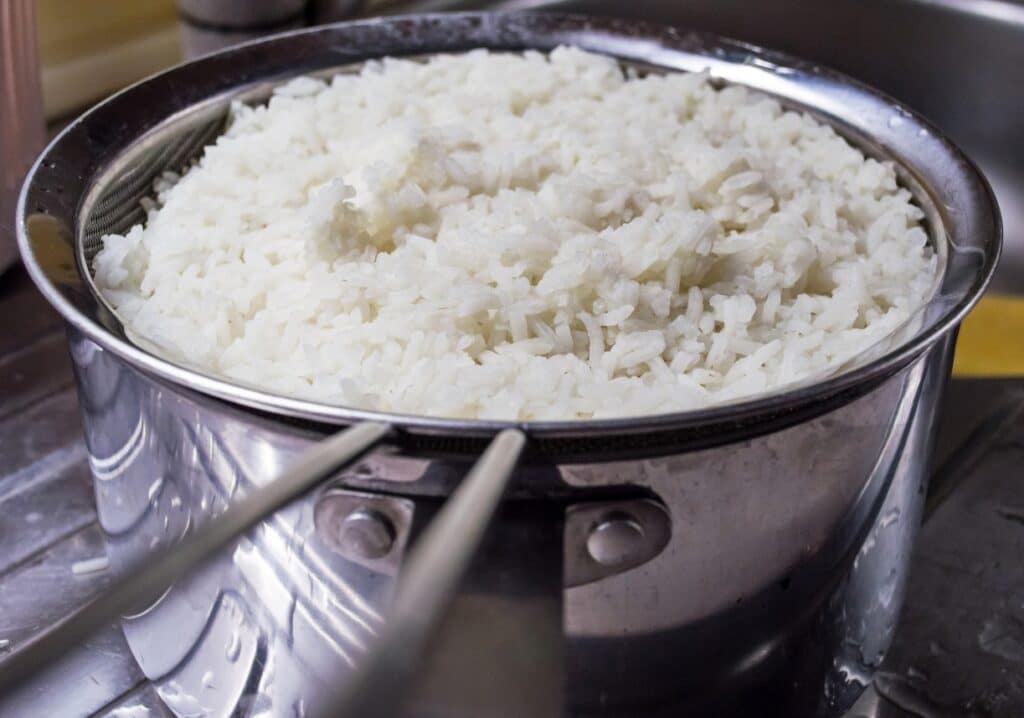All About the Tomatillo
- September 2021
- By Mildred Kwan
- Recipe from Everywhere Latino

Yes, we know: the tomatillo looks like a tomato. Its name even means “little tomato.”
But the tomatillo, which is about the size of a lime, is not a sibling of its round red lookalike. More like a distant cousin.
Tomatillos are from the nightshade plant family (along with potatoes, peppers, eggplants, and, yes, tomatoes. Did you already know that?) Don’t let the scary-sounding nightshade part of their familia tree intimidate you! Just like their plant primos, tomatillos add mucho flavor and expand your Latino culinary repertoire.
You’re probably most familiar with tomatillos in the salsa verdes we love so much from Mexican and Guatemalan cuisine. This staple of these two countries’ cuisine is a fruit of many names: Mexican husk tomato, jamberry, husk cherry. (We agree. Calling it a fruit seems debatable. Just like its namesake, the tomatillo seems more like a vegetable, but fruta it is.)
Unlike the tomato, the tomatillo is firm and tart. Its acidic flavor is much stronger when eaten raw, which is why it’s less commonly used uncooked. That said, this acidity can add welcome zing to a salad or freshness to meat dishes (similar to the concept of a sprinkling a dash of fresh lime or lemon juice on a dish).
The First Tomatillo: History of This Fruit
Tomatillos are native to the Guatemalan highlands and Mexico. Aztecs domesticated the tomatillo around 800 B.C., and the fruit played a key role in the Aztec and Mayan economy. Its name comes from the Aztec language Nahuatl word: “tomatl.” Loaded with vitamin C, vitamin K, niacin, potassium and manganese, the tomatillo provided much needed nutrition in ancient Mexico and Guatemala.
You can eat the tomatillo both raw and cooked. When ready to use, first remove its husk and discard. Underneath, the fruit has a sticky film. Give the tomatillos a good rinse to remove the tackiness. This is nature at work: both the husk and sticky exterior protect the fruit by keeping pests at bay during the growing season. They also help the tomatillo last longer after it is picked.
Tomatillos’ exterior husk is called the lantern. The fruit grows inside this raspy covering, which gives a good indication of the tomatillo’s ripeness. It’s fully ripe when the fruit completely fills the lantern. The husk should be dry, browning and papery. Another clue to its ripeness is when the husk at the bottom of the fruit splits slightly open.

How to Cook and Store Tomatillos
Tomatillos can be stored in the same way as garlic. Place them in a dry, well-ventilated area, and they will keep for up to three weeks. (Bonus: if you grow your own, at the end of the season, pull up the entire tomatillo plant—with fruit attached. Hang the plant, roots and fruit included, upside down in a cool dry place and its tomatillos will last months!)
Cooking tomatillos makes them less acidic. Boiled, they will keep their tartness. Roasting brings out their sweet side, which is why traditionally, tomatillos are roasted or grilled before being blended into salsas and added to soups and stews.
Try adding tomatillos to pozole, like one of our favorite cocineras of Mexican comida, Anjie Villalobos, does in her family-favorite recipes for green chile chicken pozole and salsa verde. In Guatemala, tomatillos are used to make jacón, a traditional stew that simmers chicken in a salsa verde. (Do you have a family-famous recipe for jacón? We’d love to showcase your family’s receta!)
Move over onions, papas and garlic. There’s a new pantry staple that will keep for months, is packed with authentic tart-sweet sabor, and deserves to be used more frequently in Latino dishes. Make room for the small yet mighty tomatillo.
Photos: Michelle Ezratty Murphy
MoreLike This








Got a question or suggestion?
Please rate this recipe and leave any tips, substitutions, or Qs you have!